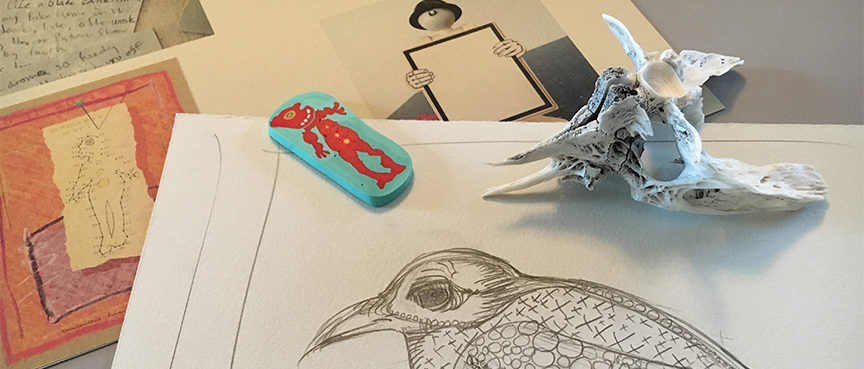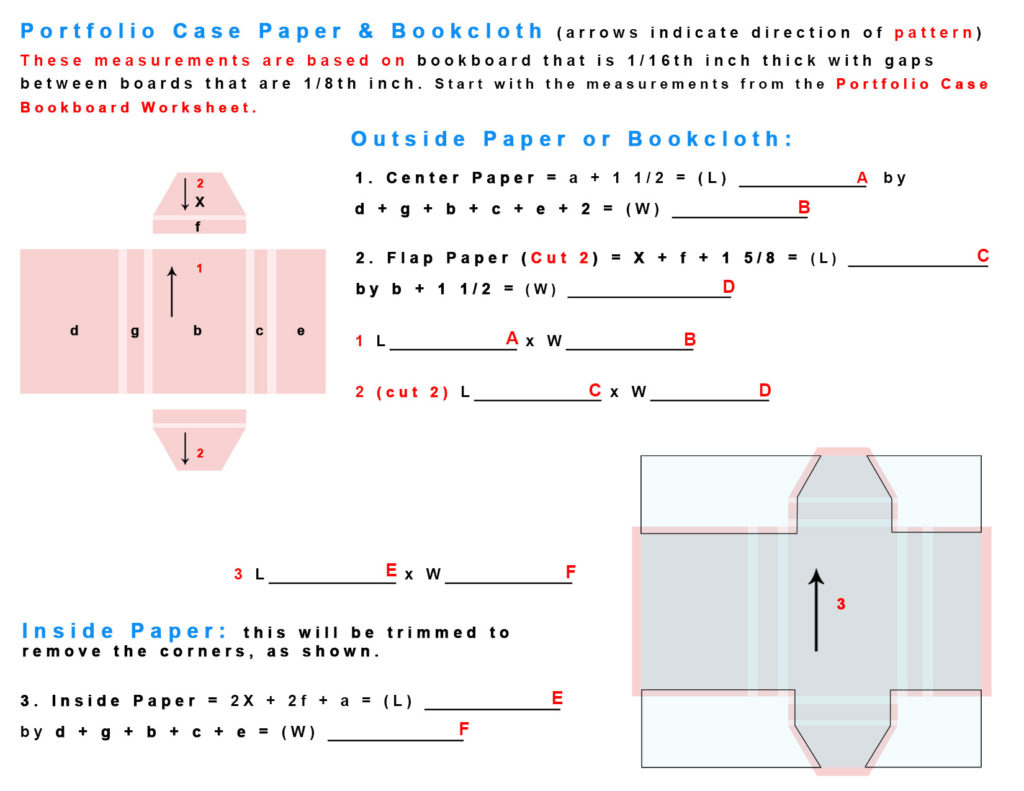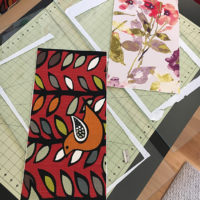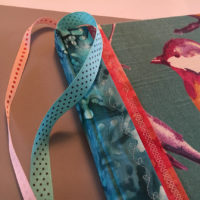Download these worksheets to create the hardbound portfolio case. That tutorial can be found here.
Click on the image to be taken to a download page for each worksheet. These worksheets are available in Imperial measurements (inches) and Metric measurements (millimeters).
Imperial Measurements (Inches):
1. Bookboard
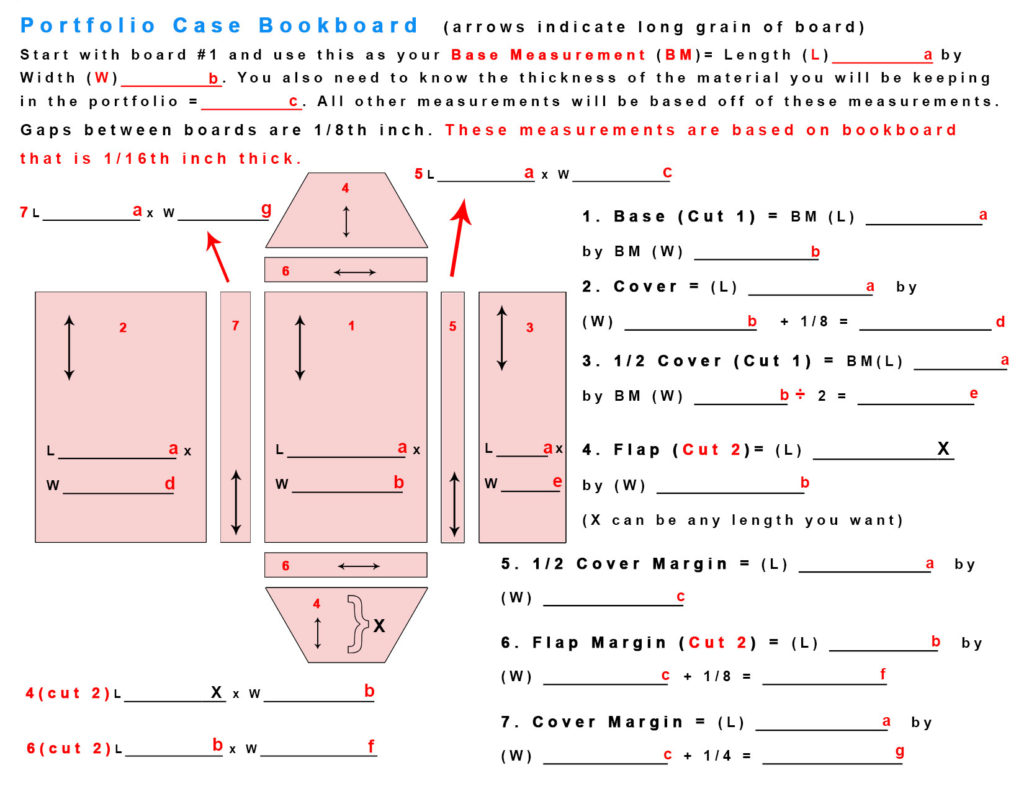
2. Paper and Bookcloth
3. Template for Hinge/Flap Cuts
Metric Measurements (millimeters):
1. Bookboard
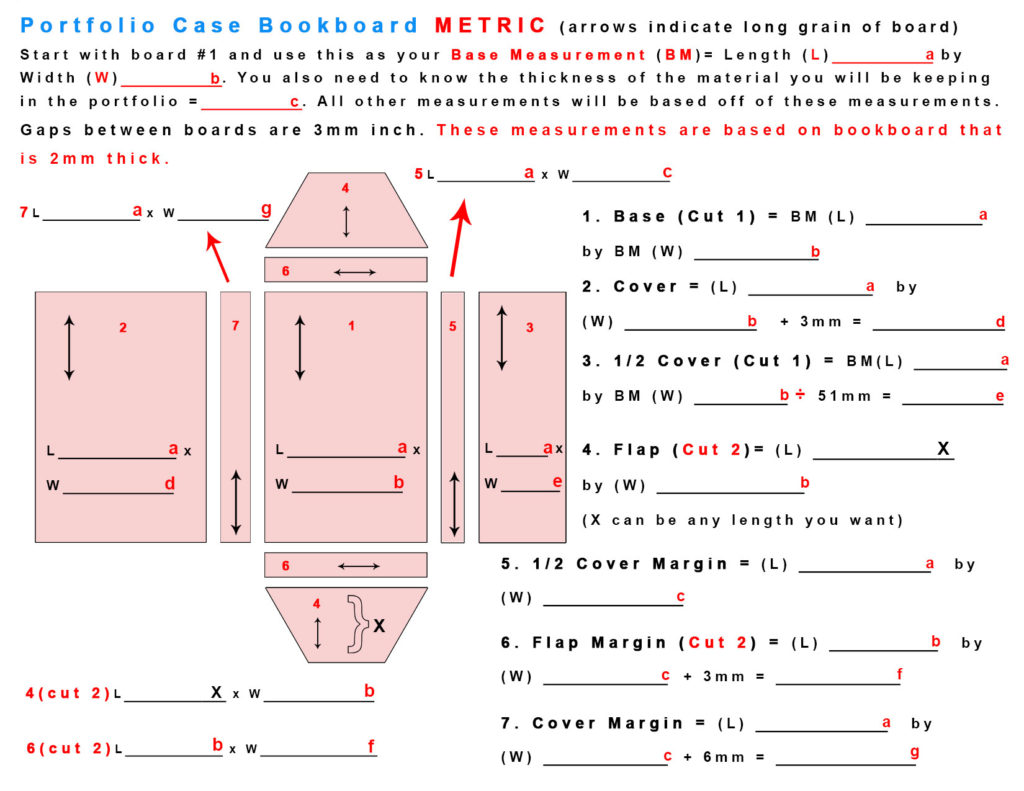
2. Paper and Bookcloth
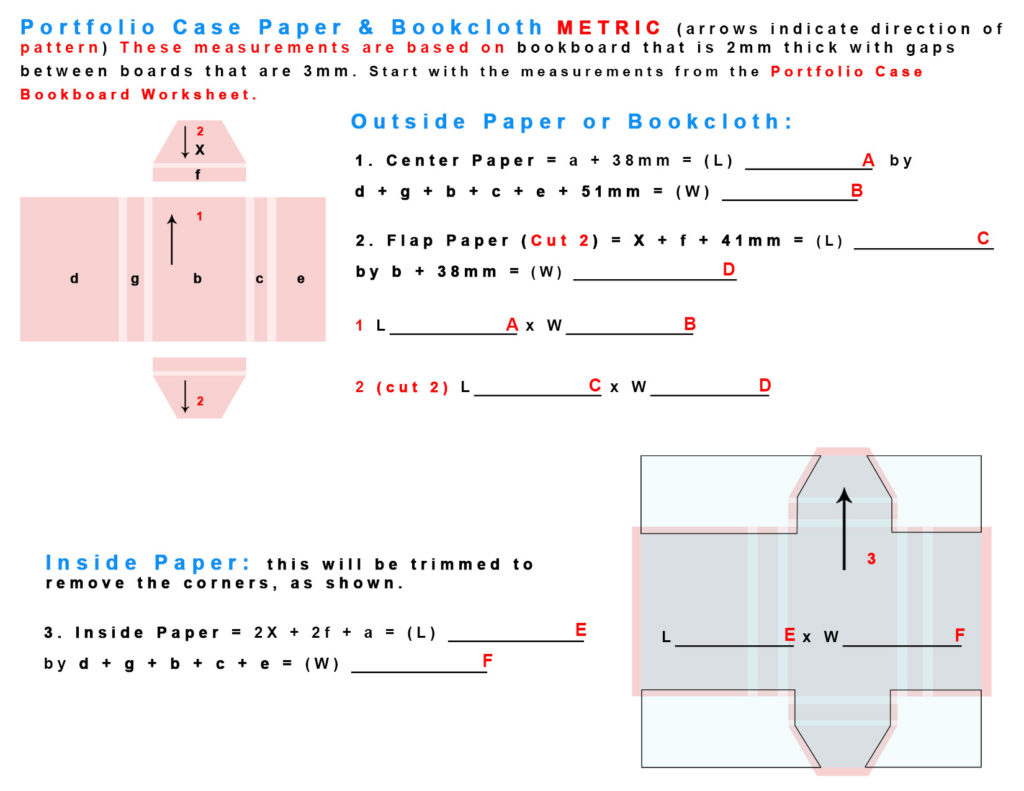
3. Template for Hinge/Flap Cuts
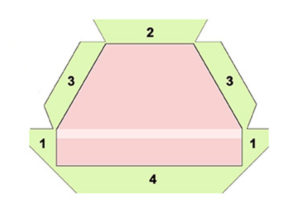
The ultimate goal with these worksheets is to have the left sides fully filled out, giving you a road map for cutting all of the materials needed to create this portfolio.
You want to start with the “Portfolio Case Bookboard” worksheet.
Fill in the Length and Width of the item that you are making the portfolio for, as well as the thickness.
Once you have these three measurements filled in go through the sheet and fill in all of the As, Bs and Cs that you see on the worksheet. All of your measurements will be based off of these three figures.
Then, just start working your way through the rest of that worksheet, starting with the next letter ‘d’. Work out the math, in this case adding 1/8th to 5 to solve that measurement. Simple enough. Fill in any other ‘d’ blanks.
Continue in this fashion until you have filled in all of the blanks on this worksheet.
The field marked X isn’t based on any other measurement and you can make up a number for this. It will be the length of the top and bottom flaps that fold over the object in the portfolio. I’ve chosen 2 and ½ inches for this 5 by 7 inch portfolio because it seems like a good proportion.
If you are using the Imperial (inches) worksheet
Don’t feel daunted by the occasional fractional math you’ll need to do with these sheets. Here’s a quick reminder about how to add fractions that aren’t the same, in case you don’t remember. If fractional math isn’t a problem for you, just skip ahead to about 3 minutes on the timeline.
The key to adding fractions together is that the denominators need to be the same, and if they aren’t, you need to make them the same. So, in this case, where you need to add ½ and 1/8th, you need to turn the ½ into eighths. How do you turn 2 into 8? You multiply it by 4, and you need to multiply the top and bottom by the number. So, if you multiply ½ by 4/4ths you get 4/8ths, and now your denominators are the same. You’re just multiplying it by the equivalent of 1, so you aren’t changing the value at all. Just the form it’s in. Now just add the top parts, the numerators and you have your new fraction – 5/8ths.
Finish up the bookboard worksheet
Finish out this worksheet and then start on the paper and bookcloth worksheet.
There are basically just 3 main measurements that you’re working toward here:
- the paper necessary to cover both flaps, so you’ll cut two of these,
- the paper necessary to cover the main body of the portfolio (cut one),
- and the paper liner for the inside of the portfolio (cut one). This will be trimmed further once you get to that step.
You’ll use the results from the first worksheet for this one. So, for instance, the value of lower case ‘a’ comes from the first worksheet, in this case that value is 7. Just do the simple math, adding 1 and ½, to fill in the value for upper case A, which is the length of the main body of the portfolio.
To get the width you need to add a lot of values from the first worksheet together plus add 2 to this figure for the extra margins that you’ll need. Write these down on a scrap piece of paper. You’ll probably need to do some more fractional math to add all of these together. Remember, just figure out the common denominator and do the math accordingly.
So, I’ve converted all of the fractions so that I can add them together. First I add my whole numbers then I add my fractions. You’ll probably end up with a fraction that you need to reduce. Just subtract out the whole number, in this case 8/8ths and add this to your whole numbers, and whatever is left over is the fraction, 7/8ths. So, in this instance your final measurement is 15 and 7/8ths.
Finish out the rest of this worksheet in the same manner and you will have all the measurements for the materials you need to cut for your portfolio case.
